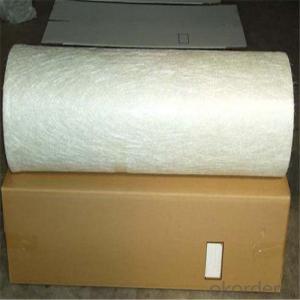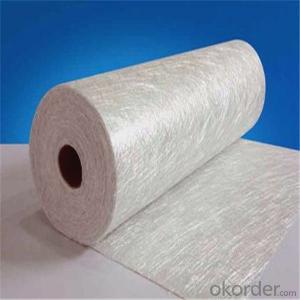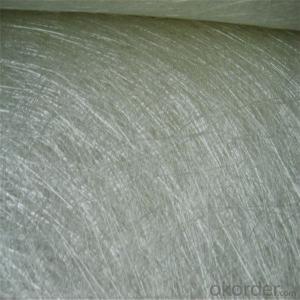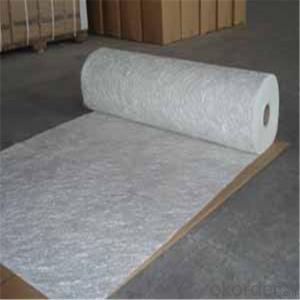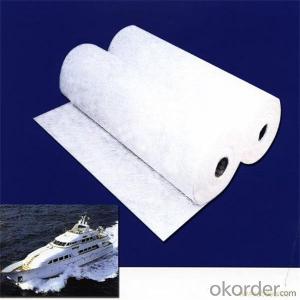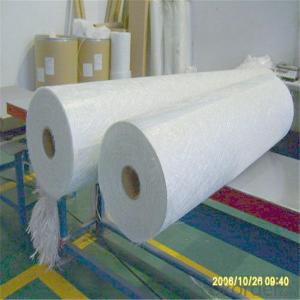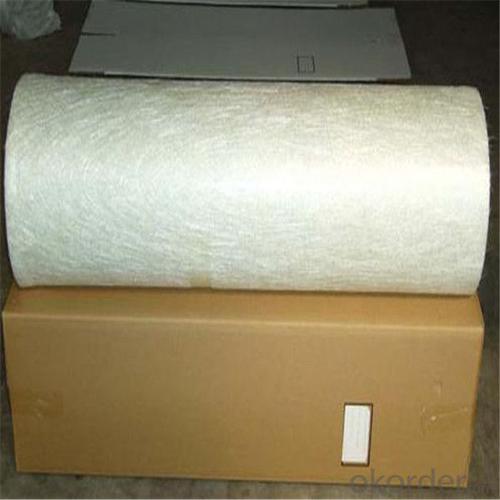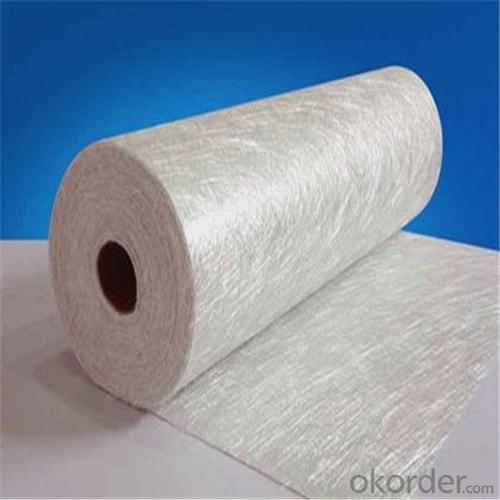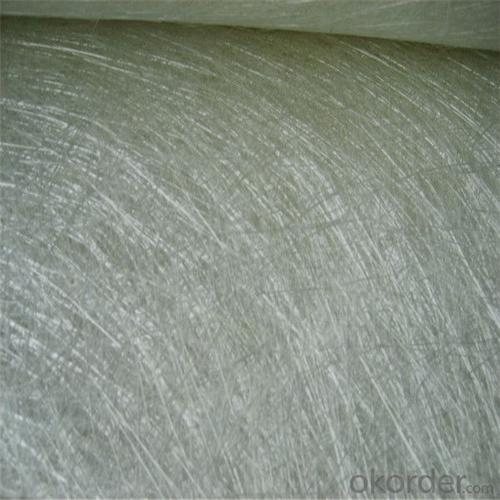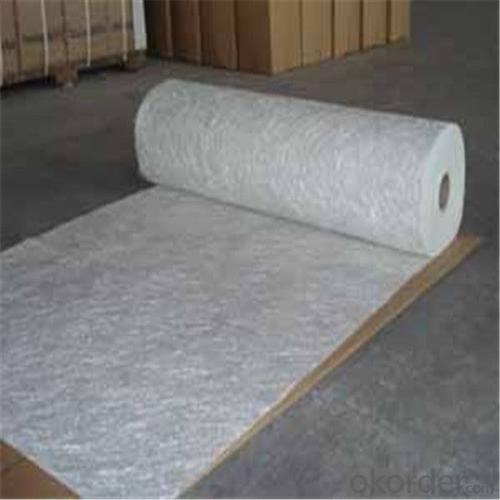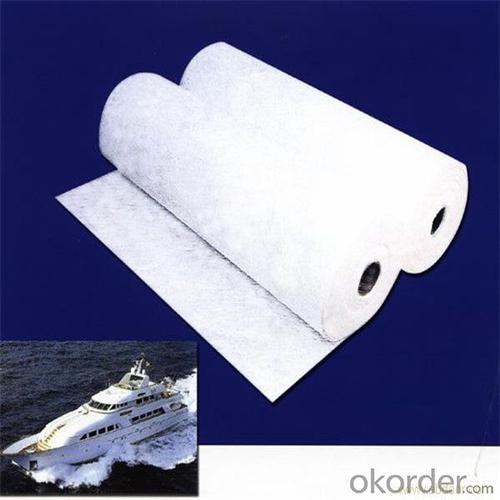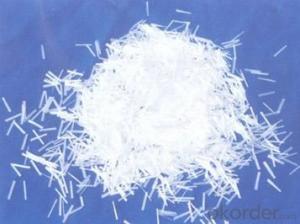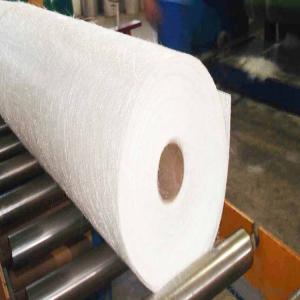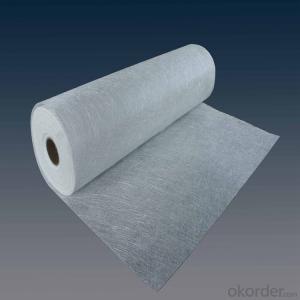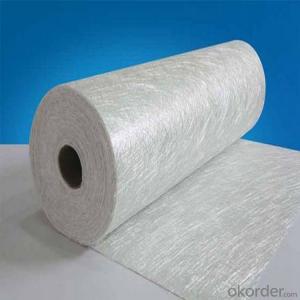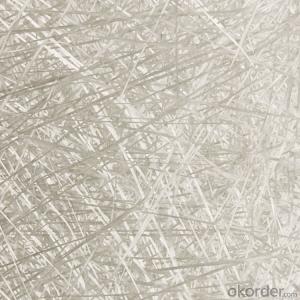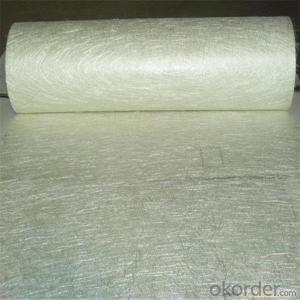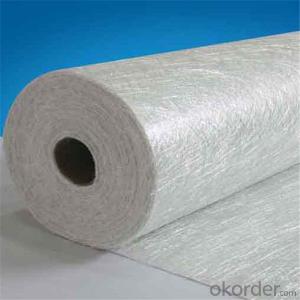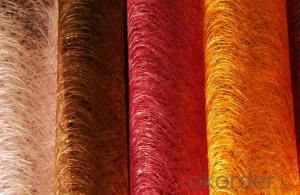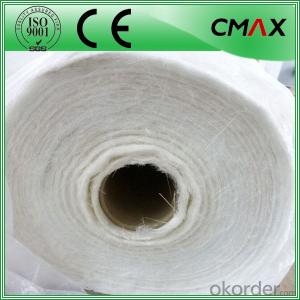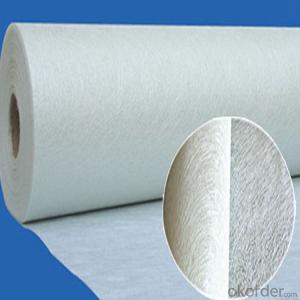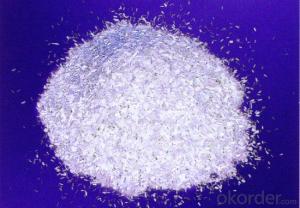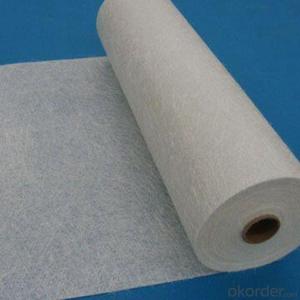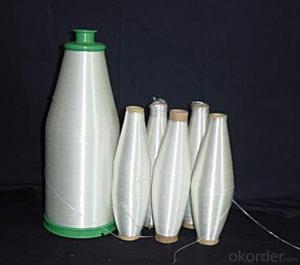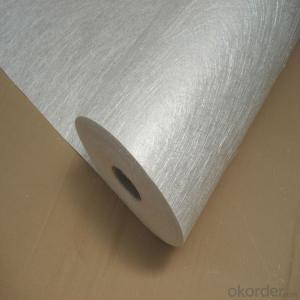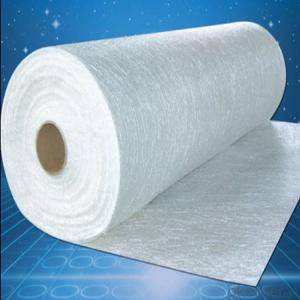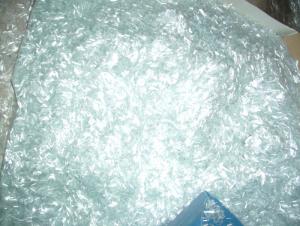Chopped Fiberglass Strands Utah Fiberglass Chopped Sand Mat for Boats
- Loading Port:
- Tianjin
- Payment Terms:
- TT OR LC
- Min Order Qty:
- 100 m.t.
- Supply Capability:
- 20000 m.t./month
OKorder Service Pledge
Quality Product, Order Online Tracking, Timely Delivery
OKorder Financial Service
Credit Rating, Credit Services, Credit Purchasing
You Might Also Like
Quick Details
| Technique: | Chopped Strand Fiberglass Mat (CSM) | Dimensions: | 450gsm | Mat Type: | Continuous Filament Mat |
| Fiberglass Type: | E-Glass | Softness: | softness | Place of Origin: | Jiangxi, China (Mainland) |
| Brand Name: | cnbm | Model Number: | 450gsm | color: | white |
| fiberglass type: | E glass | product: | e-glass powder chopped stand mats | binder: | powder or emulsion |
| width: | 1040 or 1270mm, as your requirement | weight: | 30 or 45kg/roll | paper tube diameter: | 90mm |
| outer diameter of roll: | 256mm | packing: | plastic film+carton box + pallet |
Packaging & Delivery
| Packaging Details: | plastic film+carton box + pallet |
| Delivery Detail: | 15-20days |
Specifications
1.e-glass powder chopped stand mats
2.binder:power or emulsion
3.width:1040mm or 1270mm
4.weight:450gsm
Picture
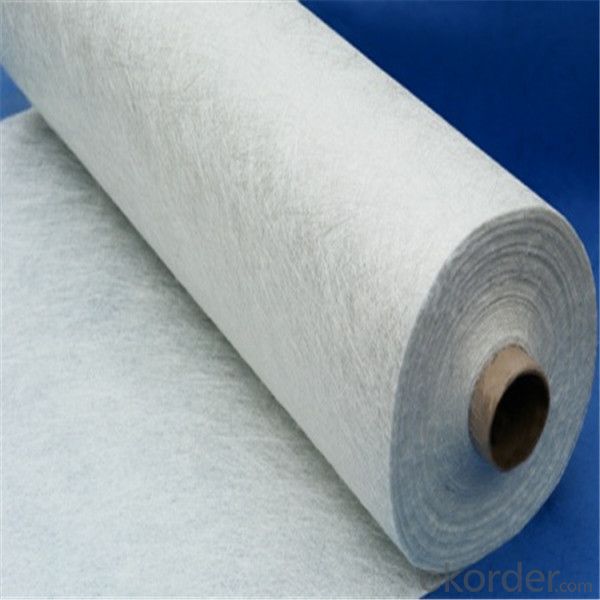
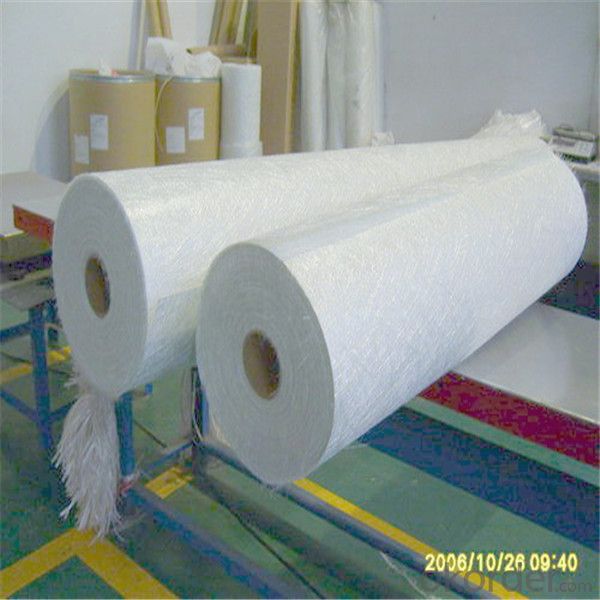
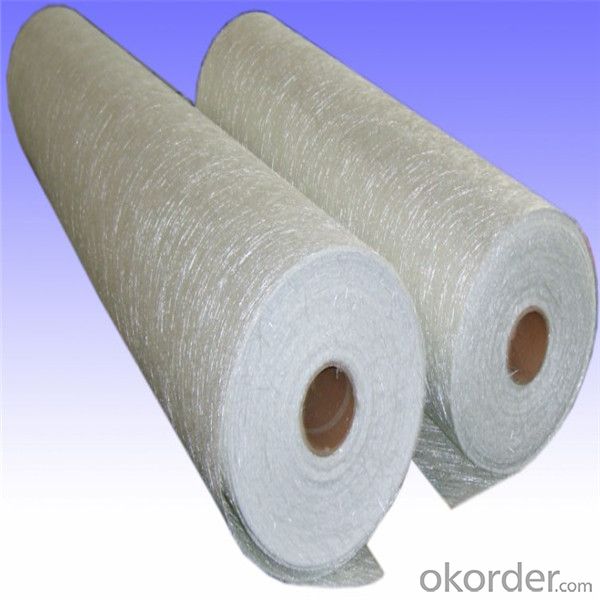
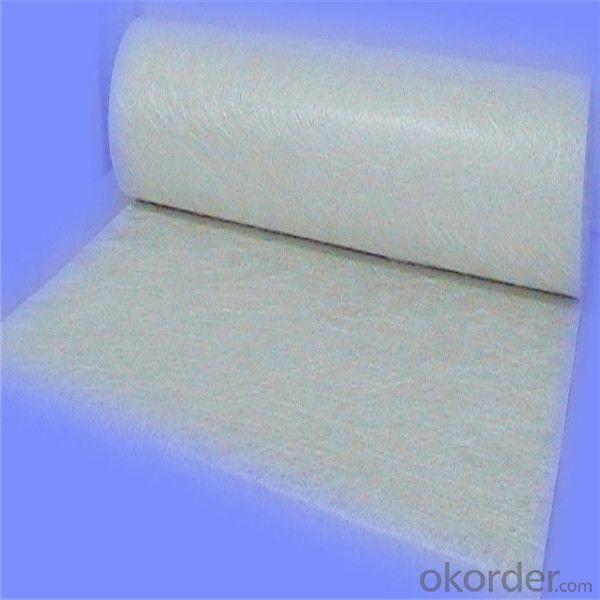
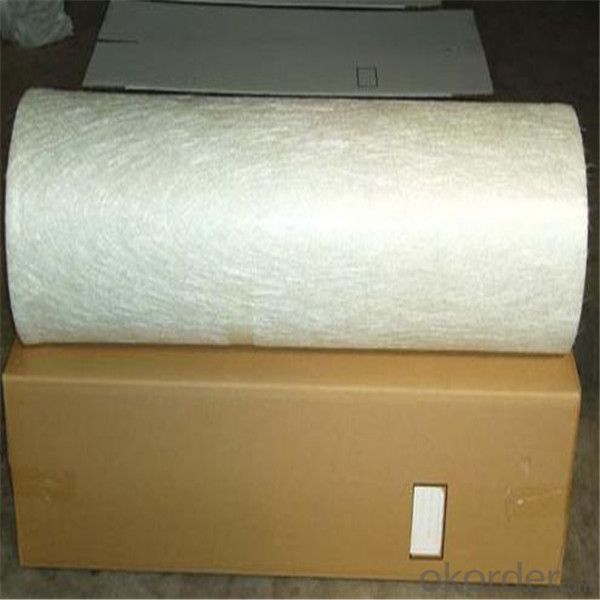
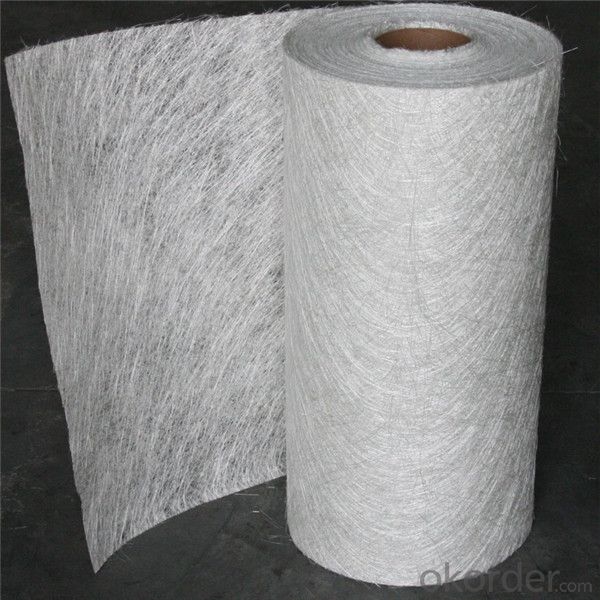
- Q: Can fiberglass chopped strand be used for reinforcing metal matrix composites?
- Yes, fiberglass chopped strand can be used as a reinforcing material in metal matrix composites. The strong and lightweight nature of fiberglass makes it suitable for enhancing the mechanical properties of metal matrices, providing increased strength, stiffness, and resistance to wear and corrosion.
- Q: Can fiberglass chopped strand be used in electrical insulation sheets?
- Yes, fiberglass chopped strand can be used in electrical insulation sheets. Fiberglass is a highly versatile material that offers excellent electrical insulation properties. It has a high dielectric strength, which means it can withstand high voltages without conducting electricity. The chopped strand form of fiberglass is often used to reinforce various materials, including electrical insulation sheets, to enhance their mechanical strength and durability. Additionally, fiberglass is resistant to heat, chemicals, and moisture, making it an ideal choice for electrical insulation applications.
- Q: How does the tensile strength of the chopped strand affect its performance?
- The tensile strength of a chopped strand directly affects its performance in various applications. Tensile strength is a measure of the maximum amount of tensile stress a material can withstand before breaking or fracturing. In the context of chopped strands, which are short, discrete fibers, the tensile strength determines their ability to resist pulling or stretching forces. A higher tensile strength in chopped strands generally leads to improved performance in several ways. Firstly, it enhances the overall strength and structural integrity of composite materials when these chopped strands are incorporated into them. Composite materials, such as fiberglass composites, rely on the reinforcement provided by chopped strands to improve their mechanical properties, including tensile strength. Higher tensile strength chopped strands allow for greater load-bearing capacity and resistance to deformation or failure. Secondly, a higher tensile strength in chopped strands enhances their ability to withstand external forces and extreme environmental conditions. This is particularly important in applications where the chopped strands are exposed to constant stress, such as in automotive parts, aerospace components, or infrastructure materials. The higher tensile strength allows for increased durability and longevity, reducing the likelihood of premature failure or damage. Moreover, the tensile strength of chopped strands also affects their processability and handling characteristics. Higher tensile strength chopped strands are less prone to breakage or fiber pull-out during handling, cutting, mixing, or molding processes. This improves the overall efficiency and quality of manufacturing operations, reducing waste and ensuring consistent performance in the final product. In summary, the tensile strength of chopped strands plays a crucial role in their performance. Higher tensile strength chopped strands offer improved strength, durability, and processability, making them more suitable for demanding applications where structural integrity and long-term performance are essential.
- Q: Can fiberglass chopped strand be used in the production of automotive parts?
- Automotive parts can be produced using fiberglass chopped strand. This reinforcement material is created by chopping fiberglass strands into smaller pieces. Its high strength-to-weight ratio, durability, and cost-effectiveness make it a popular choice in the manufacturing of automotive parts. In the automotive industry, fiberglass chopped strand is commonly utilized in the production of various components like body panels, bumpers, hoods, fenders, and interior parts. It is often combined with resin to form composite materials that possess excellent strength and stiffness properties. The length and orientation of the chopped strand can be tailored to meet specific design requirements, enabling a wide range of applications in automotive manufacturing. Moreover, fiberglass chopped strand provides several advantages for the production of automotive parts. Firstly, it is lightweight, which aids in reducing the overall vehicle weight and enhancing fuel efficiency. Furthermore, it boasts remarkable corrosion resistance, making it suitable for automotive applications that are exposed to harsh environments. Additionally, fiberglass chopped strand exhibits good dimensional stability and can withstand high temperatures, making it suitable for under-the-hood components. In conclusion, fiberglass chopped strand is a versatile and dependable material that can be effectively employed in the production of automotive parts. Its unique properties make it an excellent choice for manufacturers seeking to enhance the performance, durability, and cost-effectiveness of their automotive components.
- Q: What are the typical manufacturing processes for fiberglass chopped strand composites?
- The manufacturing of fiberglass chopped strand composites involves a series of essential steps. To begin with, the raw materials, which consist of chopped fiberglass strands and a resin matrix, are readied. The chopped fiberglass strands are typically made by cutting continuous glass fibers into shorter lengths, usually ranging from 0.5 to 3 inches. Following this, the resin matrix, typically a thermosetting material like polyester, vinyl ester, or epoxy, is mixed with various additives and catalysts to improve its mechanical properties and curing characteristics. The ratio of resin to chopped fiberglass strands is determined based on the desired strength and performance of the final composite. After the preparation of the raw materials, they are combined through a process known as impregnation. This involves thoroughly coating the chopped fiberglass strands with the resin matrix to ensure saturation. Various techniques, such as hand lay-up, spray-up, or filament winding, can be employed to achieve this. Once impregnation is complete, the composite material is shaped according to the desired form. This can be accomplished using techniques like compression molding, injection molding, or pultrusion. Compression molding requires placing the impregnated material into a mold and applying heat and pressure to shape and cure the resin. Injection molding follows a similar process but entails injecting the resin into a closed mold under high pressure. Pultrusion, on the other hand, continuously pulls the impregnated material through a heated die to shape it into a continuous profile. After shaping, the composite is cured to ensure the hardening of the resin matrix and bonding of the chopped fiberglass strands. Curing can be achieved through heat, chemical reactions, or a combination of both, depending on the specific resin system used. The temperature and duration of curing are precisely controlled to attain the desired mechanical properties and dimensional stability. Lastly, the cured composite undergoes trimming, finishing, and quality inspection. Trimming involves the removal of any excess material or flash that may have formed during shaping and curing. Additional post-processing steps, such as sanding, painting, or coating, may be applied to further enhance the appearance and performance of the finished composite. In summary, the manufacturing processes for fiberglass chopped strand composites involve the preparation of raw materials, impregnation of the chopped fiberglass strands, shaping of the composite, curing of the resin, and finishing of the final product. These processes can be customized based on specific application requirements and desired composite properties.
- Q: How is the quality of fiberglass chopped strand controlled during manufacturing?
- The quality of fiberglass chopped strand is controlled during manufacturing through various processes and techniques. Firstly, the raw materials used in the production of fiberglass chopped strand, such as glass fibers and resins, are carefully selected and tested for their quality and consistency. This ensures that only high-quality materials are used in the manufacturing process. Next, the manufacturing process itself involves several control measures to maintain the quality of the fiberglass chopped strand. The fibers are chopped to specific lengths using precision cutting machines, which ensures uniformity in length and minimizes variations in the final product. During the coating process, the chopped strands are treated with a sizing material that helps improve their compatibility with the resin matrix and enhances their overall performance. The application of the sizing material is closely monitored to ensure proper coverage and adequate adhesion to the fibers. Quality control checks are conducted at various stages of the manufacturing process to identify any deviations or defects. These checks include visual inspections, measurements of fiber length and diameter, and testing of mechanical properties such as tensile strength and flexural modulus. Any non-conforming products are rejected and not included in the final batch. Additionally, the manufacturing facility is equipped with advanced testing equipment and quality control measures to monitor the physical and chemical properties of the finished fiberglass chopped strand. This helps ensure that the product meets the required specifications, such as tensile strength, modulus of elasticity, and resin compatibility. Overall, the quality of fiberglass chopped strand is controlled through a combination of careful selection of raw materials, precise manufacturing processes, and rigorous quality control measures. These measures help ensure that the final product meets the desired specifications and provides consistent performance for various applications.
- Q: How does the fiber breakage of fiberglass chopped strand affect the strength of composites?
- The fiber breakage of fiberglass chopped strand can significantly affect the strength of composites. When fibers break, their load-carrying capacity decreases, leading to a reduction in the overall strength of the composite material. Additionally, the presence of broken fibers can create stress concentrations, weakening the material and making it more prone to failure. Therefore, minimizing fiber breakage is crucial in maintaining the integrity and strength of composites.
- Q: Is fiberglass chopped strand suitable for architectural applications?
- Yes, fiberglass chopped strand is suitable for architectural applications. It is a versatile material that offers excellent strength, durability, and flexibility, making it ideal for various architectural uses such as paneling, roofing, insulation, and decorative elements. Additionally, fiberglass chopped strand is lightweight, cost-effective, and resistant to corrosion, making it a popular choice in the construction industry.
- Q: What are the typical cost considerations when using fiberglass chopped strand composites?
- When using fiberglass chopped strand composites, there are several typical cost considerations to be taken into account. Firstly, the cost of the raw materials themselves, including the fiberglass strands and the resin used to bind them together, will affect the overall cost. The quality and specifications of these materials can vary, leading to different price points. Another cost consideration is the manufacturing process. The method used to produce fiberglass chopped strand composites can vary, and each technique may have different associated costs. For example, hand lay-up or spray-up methods may be less expensive than more advanced techniques like resin infusion or filament winding. Labor costs also play a significant role in the overall cost. The skills required to work with fiberglass chopped strand composites, including cutting, shaping, and laminating the material, can affect the labor expenses. Skilled workers may demand higher wages, while less experienced labor can lead to increased production time and potential quality issues. Furthermore, the complexity and size of the final product will impact the cost. Larger and more intricate components will require more raw materials, labor, and time to manufacture, resulting in higher costs. Additionally, any additional finishing processes, such as painting or coating, may contribute to the overall expenses. Transportation and logistics costs should also be considered when using fiberglass chopped strand composites. Depending on the location of the manufacturing facility and the destination of the finished product, shipping expenses can vary significantly. Oversized or fragile components may require specialized handling and packaging, further increasing transportation costs. Lastly, it is important to consider the total lifecycle cost of fiberglass chopped strand composites. Although the initial investment may be higher compared to other materials, fiberglass composites offer advantages such as durability, corrosion resistance, and lightweight properties. These factors can lead to long-term cost savings by reducing maintenance, repair, and replacement expenses. Overall, the typical cost considerations when using fiberglass chopped strand composites include raw material costs, manufacturing process, labor expenses, product complexity, transportation, and long-term lifecycle costs. Understanding these factors will help in accurately estimating the overall cost of using fiberglass chopped strand composites for various applications.
- Q: Does fiberglass chopped strand have any biodegradability?
- No, fiberglass chopped strand does not have any biodegradability. Fiberglass is a type of reinforced plastic made from fine fibers of glass. These fibers are resistant to decomposition by natural processes and do not break down over time. As a result, fiberglass chopped strand is not biodegradable and can persist in the environment for a long period of time.
Send your message to us
Chopped Fiberglass Strands Utah Fiberglass Chopped Sand Mat for Boats
- Loading Port:
- Tianjin
- Payment Terms:
- TT OR LC
- Min Order Qty:
- 100 m.t.
- Supply Capability:
- 20000 m.t./month
OKorder Service Pledge
Quality Product, Order Online Tracking, Timely Delivery
OKorder Financial Service
Credit Rating, Credit Services, Credit Purchasing
Similar products
Hot products
Hot Searches
Related keywords
